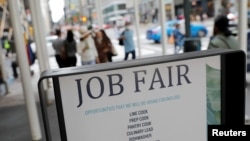The outlook for the global economy headed into 2023 has soured, according to a number of recent analyses, as the ongoing war in Ukraine continues to strain trade, particularly in Europe, and as markets await a fuller reopening of the Chinese economy following months of disruptive COVID-19 lockdowns.
In the United States, signs of a tightening job market and a slowdown in business activity fueled fears of a recession. Globally, inflation grew and business activity, especially in the eurozone and the United Kingdom, continued to shrink.
In an analysis released Thursday, the Institute of International Finance predicted a global economic growth rate of just 1.2% in 2023, a level on par with 2009, when the world was only beginning its emergence from the financial crisis.
The Organization for Economic Cooperation and Development (OECD) agrees with the pessimistic forecast. In a report issued this week, the organization’s interim Chief Economist Alvaro Santos Pereira wrote, “We are currently facing a very difficult economic outlook. Our central scenario is not a global recession, but a significant growth slowdown for the world economy in 2023, as well as still high, albeit declining, inflation in many countries.”
U.S. interest rates
In the U.S., inflation and the Federal Reserve’s efforts to combat it have been the dominant factors in most analyses of the current and future states of the economy.
The U.S has been experiencing its highest levels of inflation in 40 years, with prices beginning to jump significantly in mid-2021. By the beginning of 2022, annualized rates were over 6%, and while fluctuating a bit, touched a high of 6.6% in October.
Beginning in March, the central bank’s Federal Open Market Committee (FOMC), which sets base interest rates, has engaged in a dramatic series of increases, raising the benchmark rate from between 0.0% and 0.25% to between 3.75% and 4.0% today.
The idea behind the Fed’s moves is to change consumers’ incentives. By making the interest rates on savings more appealing, and the rates on borrowing less so, the central bank is working to reduce demand and thereby slow the rate of price increases.
In general, the Fed believes that an annual 2% rate of inflation is healthy and considers that its long-term target.
Avoiding a recession
The Fed’s goal is to get inflation under control without plunging the economy into a damaging recession. And while a number of economic signs indicate that efforts to slow demand might be working, the threat of a recession still looms.
Evidence released this week showed that business activity in the U.S. contracted for a fifth consecutive month as companies reacted to decreased consumer demand. Although the economy has continued to add jobs in recent months, applications for unemployment benefits are on the rise, suggesting a potential softening in the labor market.
The Federal Reserve this week released the minutes from the early November meeting of the FOMC. The minutes revealed a pessimistic view among the central bank’s staff economists about the U.S. economy in the coming year.
Among their findings was that they “viewed the possibility that the economy would enter a recession sometime over the next year as almost as likely as the baseline.”
A “substantial majority” of the voting members of the committee indicated that they believe it is time to slow the rate of interest rate increases, suggesting that the FOMC will retreat from its recent 0.75% increases when it meets in December, perhaps raising rates by just 0.5%.
Global struggle
Internationally, governments are facing a difficult challenge: supporting their citizens during a time when prices are rising dramatically, particularly for necessities like food and fuel, which have been deeply affected by the war in Ukraine.
In a report this week, the International Monetary Fund pointed to the difficult balancing act governments must manage, saying, “With many people still struggling, governments should continue to prioritize helping the most vulnerable to cope with soaring food and energy bills and cover other costs — but governments should also avoid adding to aggregate demand that risks dialing up inflation. In many advanced and emerging economies, fiscal restraint can lower inflation while reducing debt.”
According to the Institute of International Finance (IIF), while global growth will be low but net positive in 2023, specific areas will face declines. Chief among them is Europe, where the IIF forecasts a 2.0% decline in cumulative GDP.
Bright spots
To the extent that there are bright spots in the global economy in 2023, they are in areas such as Latin America and China.
Many countries of Latin America, where the export of raw materials, including timber, ore, and other major economic inputs drives many economies, global inflation has proved beneficial insofar as the prices for those goods have risen. The IIF report projects a 1.2% expansion in GDP across the region, even as much of the remainder of the world sees economic contraction.
China has suffered economically as a result of President Xi Jinping’s “zero-COVID” strategy, which has forced massive lockdowns of whole cities and regions, with serious disruption to economic activity. The IFF and other organizations expect significant loosening in China’s policy in the coming year, which will lead to economic growth of as much as 2.0% as the Chinese economy attempts to revive itself.
U.K. to suffer
With the exception of Russia, which is still laboring under crushing sanctions related to its invasion of Ukraine, the United Kingdom faces the gloomiest outlook for the coming year of any of the world’s largest economies.
With inflation running significantly ahead of other countries, annualized price increases are expected to touch 10% by the end of the year, before slowly moderating in 2023.
Among the G-7 countries, the U.K. is the only one in which economic output has not returned to pre-pandemic levels, and it is forecast to shrink further. The OECD projects that the British economy will decline in size by 0.3% in 2023 and will grow at only 0.2% in 2024.






